
6 minute read
ICELANDIC INFERNO
ICELANDIC INFERNO
Ian Plant and his trio of Tamron lenses document an ongoing eruption in the aptly named Land of Fire and Ice.
Advertisement
PHOTOS: IAN PLANT
They call it the volcano that keeps on giving. For more than six months, the Fagradalsfjall mountain, located in the Geldingadalur region of Iceland’s Reykjanes Peninsula, has been erupting, sending forth lava in both slow, steady streams and as fiery geysers shooting up into the sky. It’s said to be one of the lengthiest eruptions in Iceland in decades, and photographers aren’t passing up the opportunity to witness it first-hand.
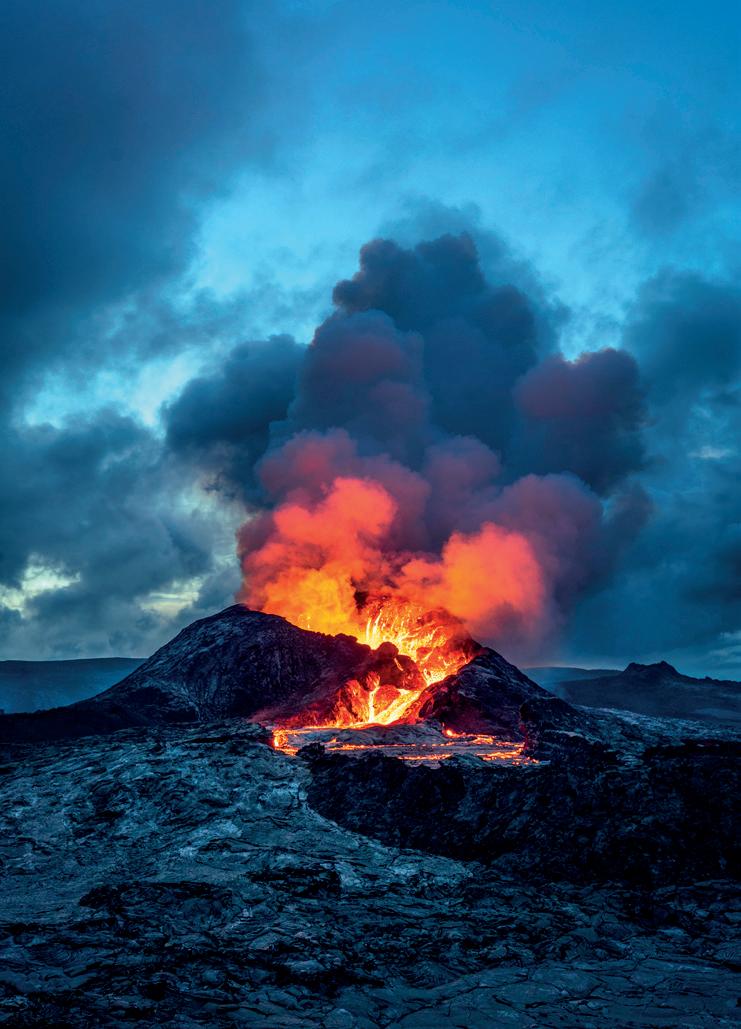
17-28mm, (28mm), F/6.3, 1/20 sec., ISO 100
Ian Plant recently visited the area to capture the magnificence of Geldingadalur’s glowing wrath, tapping into a trio of Tamron lenses for his Sony mirrorless camera: the 17-28mm F/2.8 Di III RXD, 70-180mm F/2.8 Di III VXD, and 150-500mm Di III VC VXD ultra-telephoto zoom. “The movement from the volcano was constantly changing, so having those three lenses was very useful,” he says. “When I first visited the volcano, I was incredibly close—you could feel the heat coming off of it. Because of my proximity, having a wide-angle lens like the 17-28 was handy to capture not only the eruption, but also the surrounding terrain and clouds. As the eruption progressed, however, and the viewing platforms moved significantly farther away, having those longer telephoto zooms was critical.”
Because the volcano is off of Iceland’s southern coast, in an area that’s prone to inclement weather, Ian was forced to bend to Mother Nature when it came to visiting hours. “The peninsula sticks out into the sea, and it can get very moist—the volcano is often completely shrouded in clouds and you can’t see a thing,” he says. “During my first trip, I was able to get out there four out of the six days I was there, which was pretty good. During my second trip about a month later, I missed 11 out of the 12 days. You take what you can get.”
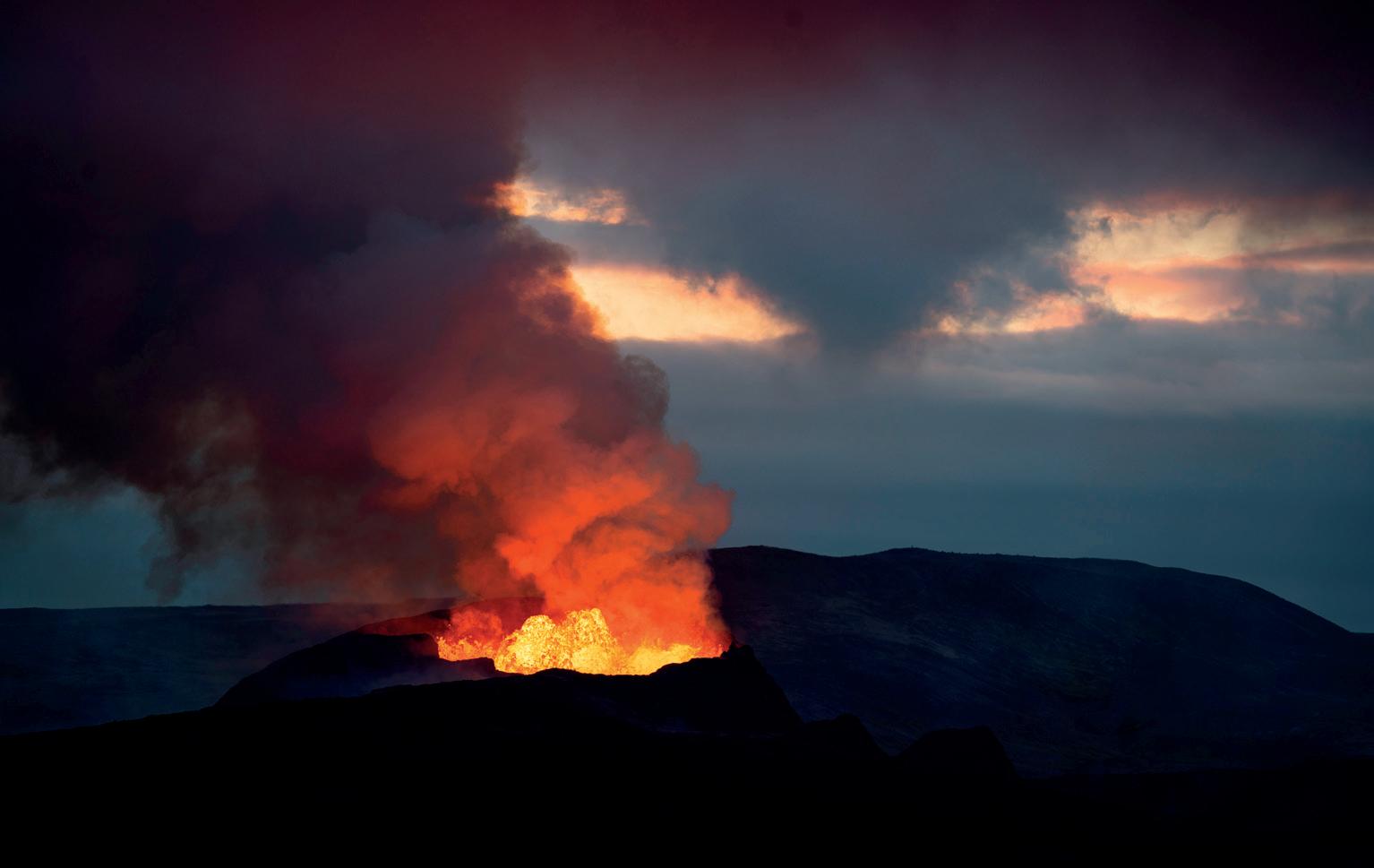
150-500mm, (150mm), F/6.3, 1/100 sec., ISO 100
The temperamental elements also prompted extra precautions in preparing and shooting. “You don’t really have to be concerned about the volcano destroying your gear in Geldingadalur— it’s the weather you have to worry about,” Ian says. “There can be a lot of rain, so you’ll want to have a camera bag with a rain cover, as well as a lens hood to keep the moisture off your lenses. A sturdy tripod is also essential, as you’re likely going to be shooting in a lot of low light and using long exposures. However, you can’t leave your tripod unattended. It’s really windy, and if you turn around for too long, you may fi nd your tripod knocked over by a gust.”
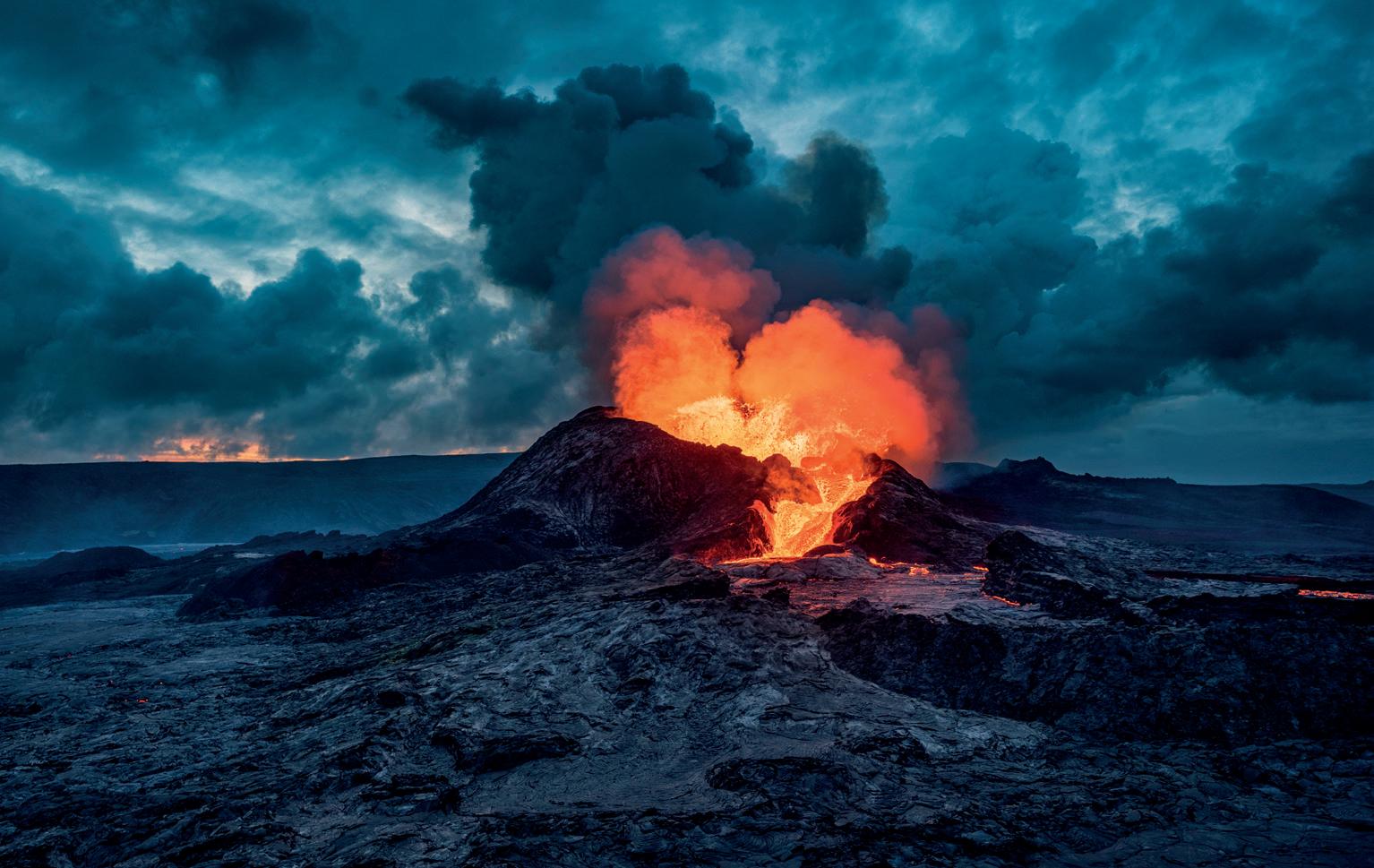
17-28mm, (25mm), F/5.6, 1/60 sec., ISO 100
Photographers trekking over the Icelandic tundra near the volcano also need to be cognizant of where they’re setting down their gear, and themselves. “There can be ejecta from the volcanic explosions on the ground,” Ian says. “The rocks and sand on the hills surrounding the volcano can be covered with these glassy particles—enough to rip your pants if you sit down. Setting your gear down in the wrong spot might not be great, either.”
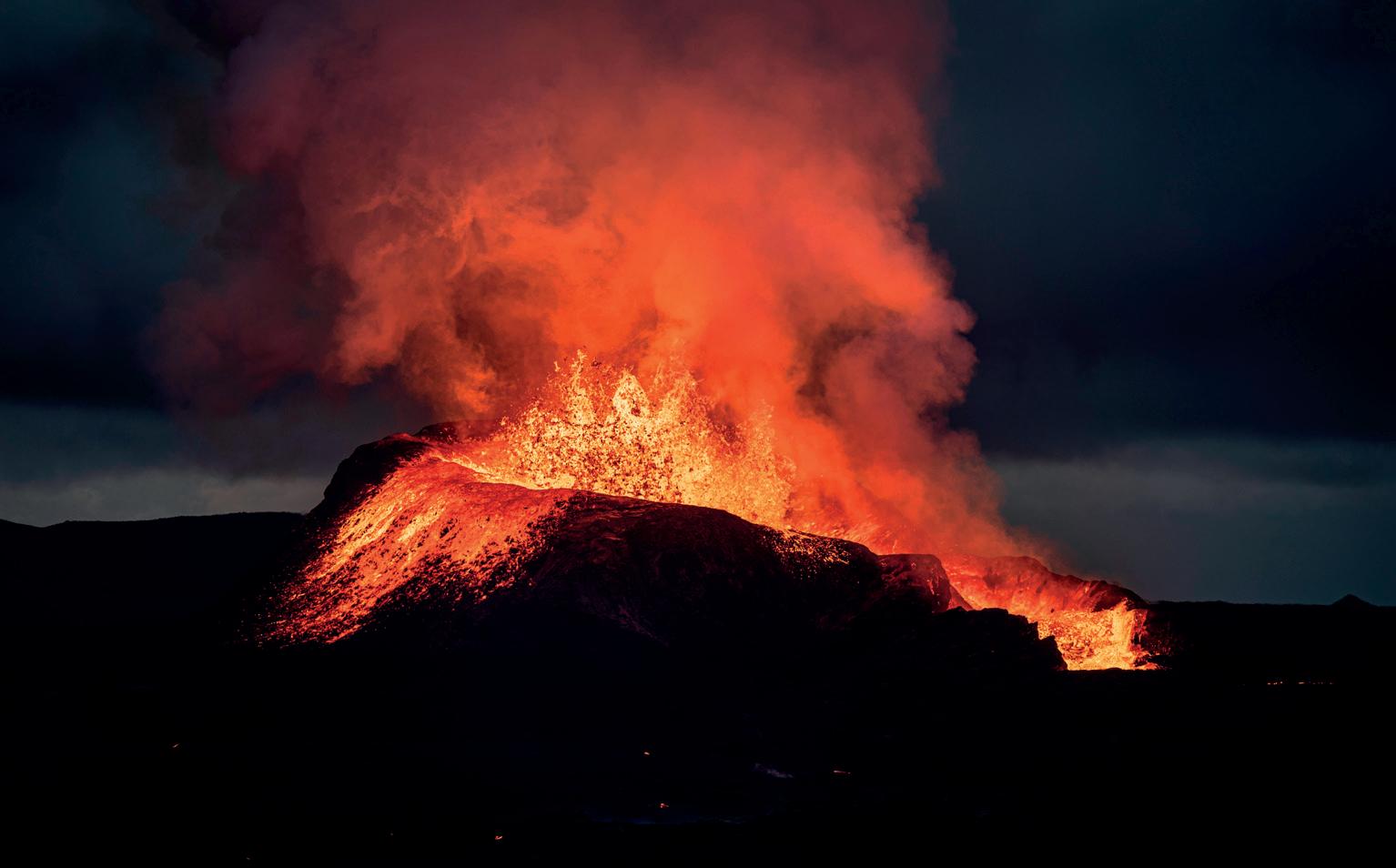
70-180mm, (105mm), F/5.6, 1/80 sec., ISO 100
Although hot lava is bright enough to shoot even during daylight, Ian prefers to shoot such scenes when there’s mixed light. “I would often try to arrive at my shooting spot around sunset so that I could include colorful clouds in the sky or maybe even the sun in the background as an element of the composition,” he says. “Because the eruption and the lava are so bright, it matches the exposure very well of the ambient light during those times. Once you head into the darker twilight hour, there are other wonderful photo opportunities. In addition to the bright red of the lava, you’ll be able to capture cooler tones over the shadowed landscape. When the ambient light totally drops and you can’t see the landscape anymore, you’re just photographing the lava itself.”
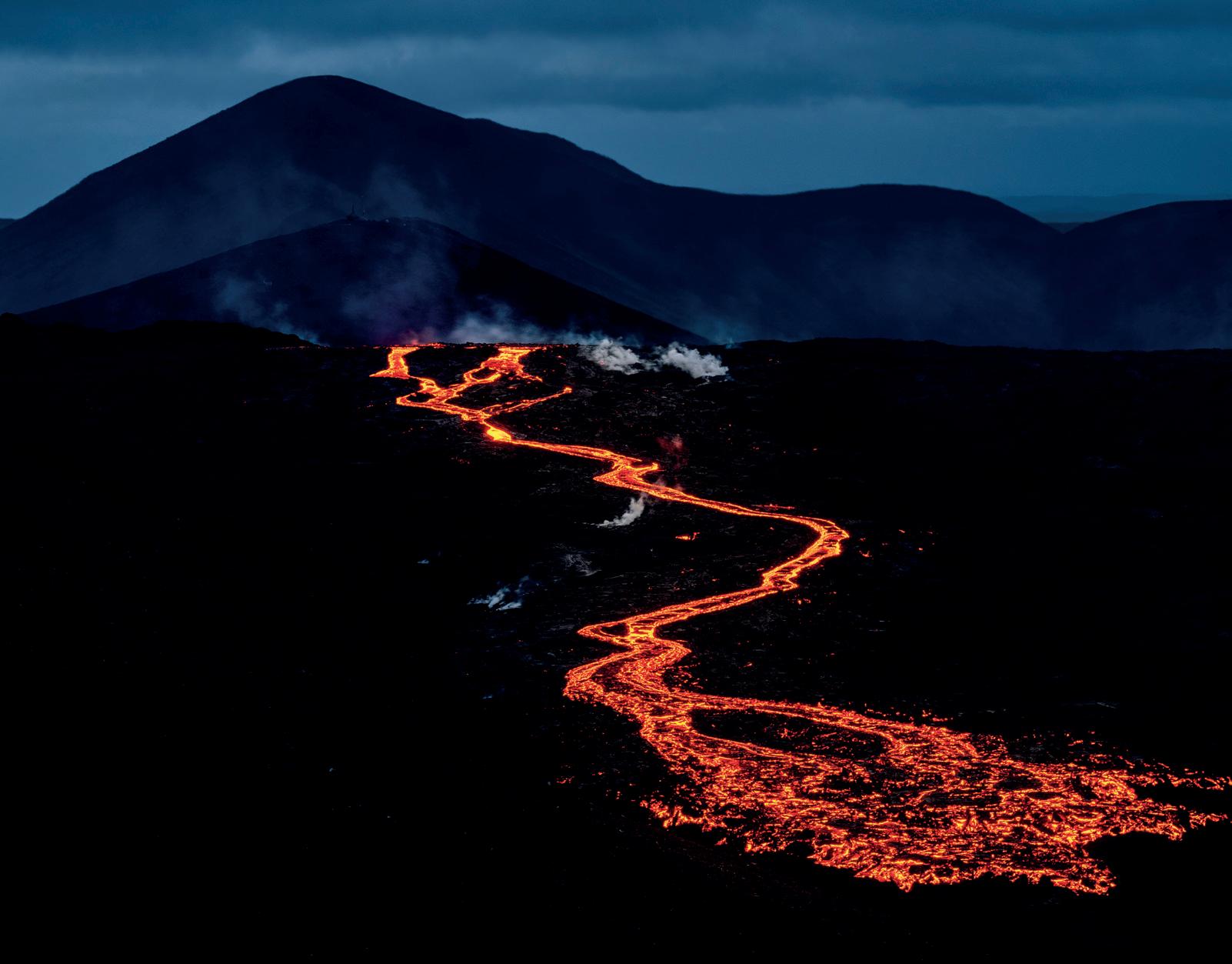
70-180mm, (114mm), F/11, 1/5 sec., ISO 100
If the volcano site is safe enough to allow photographers to congregate nearby, that means the lava likely isn’t moving quickly enough to require super-fast shutter speeds. “I’m not typically trying to freeze the action here,” Ian says. “Instead, what I like to do is experiment with longer exposures. If there’s lava flowing over the landscape, I’ll aim for a 15- or 30-second exposure to blur the lava a bit. Long exposures are also fun to do for magma bursts, as the colorful arcs shoot through the sky.”
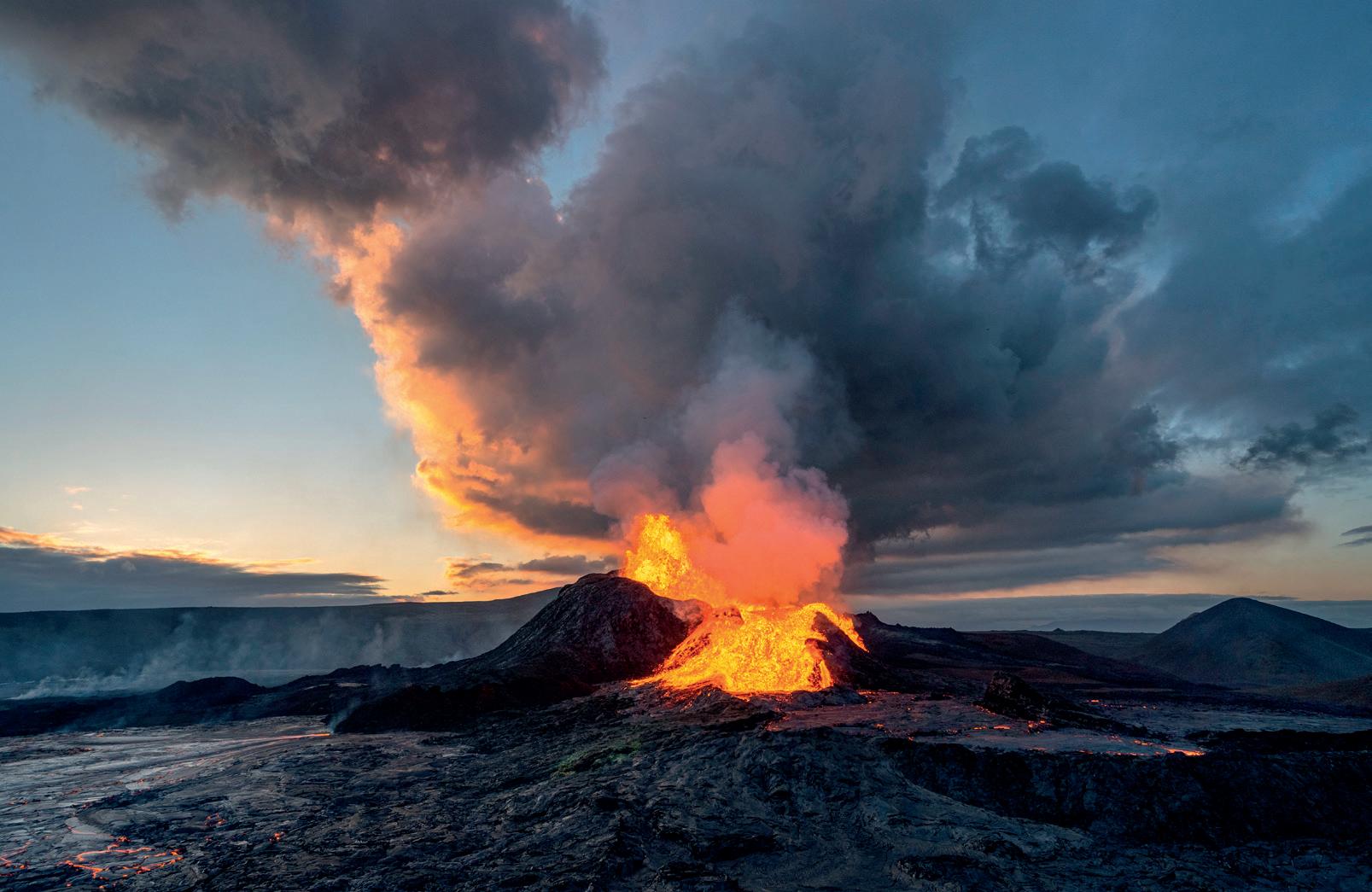
17-28mm, (17mm), F/11, 1/5 sec., ISO 100
To edit his volcano photos, Ian uses a careful hand. “Exposure in post-processing can be a bit tricky with lava because it’s so bright and a very, very brilliant red, which digital sensors have a tough time capturing,” he says. “What you often have to do is underexpose your images to ensure the reds aren’t overexposed or blown out in the digital fi le. Even then, I’d fi nd during the editing process that the RAW fi les simply didn’t capture those reds the way I saw them, with that backlit brilliance. So I spent a good amount of time trying to give my images that more vibrant, saturated look you typically associate with lava, so you feel like you’re there watching the event live.”
LENSES:
Tamron 150-500mm F/5-6.7 Di III VC VXD [model A057]
Tamron 70-180mm F/2.8 Di III VXD [model A056]
Tamron 17-28mm F/2.8 Di III RXD [model A046]
ABOUT: IAN PLANT
World-renowned professional photographer Ian Plant travels the globe seeking out amazing places and subjects in his never-ending quest to capture the beauty of our world with his camera. Ian is a frequent contributor to many leading photo magazines, the author of numerous books and instructional videos, and founder of Shuttermonkeys (https:// www.shuttermonkeys.com), a site dedicated to photography education and inspiration. Instagram@ianplantphoto





